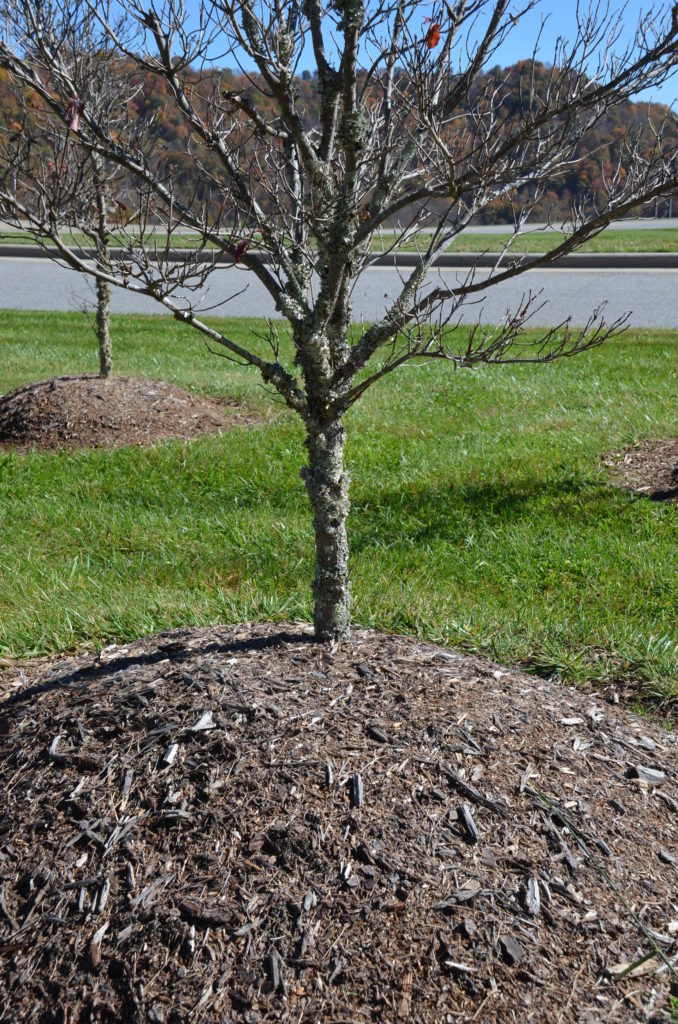
Ever heard of a “mulch volcano? It is a load of mulch that is piled up around the base of a landscape shrub or tree. A common answer I get from homeowners guilty of this practice is that they see professional landscapers and city maintenance crews doing it.
Volcano mulch can also cause tree roots to encircle the tree trunk. Eventually, this develops stem-girdling roots associated with volcano mulch, particularly on shallow rooted species like elms and maples.
Mulch volcanoes do not occur in nature and are all man-made. In fact, the practice may cost 2-3 times because of the excess mulch materials and installation cost. Result: 1. trees don’t grow, 2. their life expectancy is greatly reduced, and/or 3. the tree dies. Thick mulch layers develops tree health problems —suffocation of roots, loss of the root systems, and trunk girdling.
The injurious effect of mulch volcanoes occurs over multiple years. Initially, tree growth appears abnormal. Tree structure is weakened and become a liability to pedestrians, autos, and property owners. Insects such as scale insects and borer make their homes in the decaying wood. Disease pathogens also have an easier time invading the trees via the wounds.
Piling mulch around tree trunks has been a bad practice for decades. As the mulch decomposes and dries out, it becomes hydrophobic, that is, the organic mulch dries out; or becomes hydrophobic. You can observe hydrophobicity of dry organic matter when you try to moisten a bag of dry peat moss.
Remedy: First, inspect the trunk itself by removing the decaying mulch. Expose the decayed area to the air and treat decaying areas with insecticides. If you are unsure how to proceed, contact a certified tree arborist in your area.

 Posted in
Posted in 
